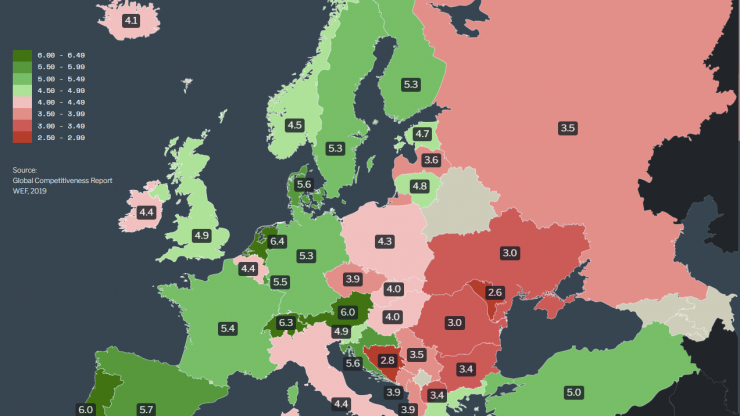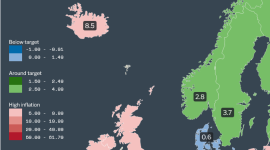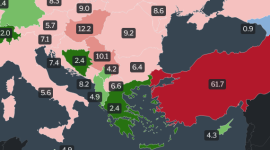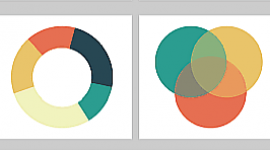Road quality in Europe data source
The information used to create this map was taken from the Global Competitiveness Report 2019, published by the World Economic Forum. This report ranks 141 countries based on their performance in a variety of different categories. The Executive Opinion Survey results were used to generate some of those ratings.
Participants were asked to evaluate the situation for specific domains at the country level, and 12,987 business executives from 139 economies around the world responded to the survey’s 78 questions. One of the questions that were asked was:
“In your country, what is the quality (extensiveness and condition) of road infrastructure?”
People were given the option of giving a rating anywhere from 1 (extremely poor — among the worst in the world) to 7 (extremely good — among the best in the world).
General trends
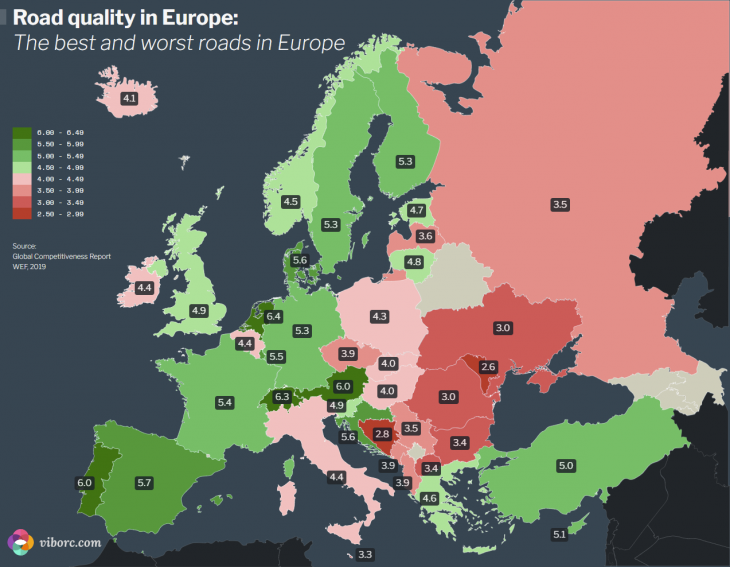
While the general trend is noticeable (Eastern European countries have, on average, worse scores than those in Western and Northern Europe), there are several outliers.
For example, Belgium has significantly worse roads than its neighbors. That contrast is made even stronger given that the Netherlands has the best road quality in Europe (scores of 6.4 compared to Beligum’s 4.4). And, naturally, that resulted in the Dutch making jokes about their neighbors, saying that the difference between the roads in the Netherlands and Belgium is not just visible – you can feel and hear it!
Iceland also scores low at 4.1 points, likely because of its sparse population and rugged terrain.
Croatia and Turkey as positive outliers
The best roads in Central and Eastern Europe are found in Austria (score 6.0) and Croatia (5.6).
Croatia is an interesting example, given that the country’s road infrastructure is among the best in Europe and the 12th best in the world. Starting back in the 2000s, the country embarked on an ambitious set of road infrastructure development projects aiming to increase the quality of the roads. Since Croatia is one of Europe’s most visited tourist locations, the importance of road infrastructure was critical, and the investments in this sector were huge.
Another positive outlier is Turkey scoring 5.0, more than some Western and Northern European countries – even above Norway (4.5) and the UK (4.9).
Difficult terrain for road building, exacerbated by countless fjords and a relatively sparse population, explains why Norway has a lower score than its Nordic neighbors.
The worst roads are in Eastern Europe
At the lower end of this scale are Moldova and Bosnia and Herzegovina, with Europe’s worst roads scoring 2.6 and 2.8, respectively. Just slightly better results are found in Romania and Ukraine (3.0 each), Bulgaria and North Macedonia (3.4 each), and Serbia at 3.5 points.
Global perspective
Europe’s best roads, those found in the Netherlands and Switzerland, are also among the world’s best. Singapore is the world leader and scores 6.5, followed by the Netherlands (6.4), and Switzerland (6.3), with Hong Kong and Japan, each at 6.1 points.
Looking at the broader perspective of Europe’s worst roads, Moldova ranks the 127th, and Bosnia and Herzegovina is 121st out of 141 countries surveyed. Globally poor results.
The world’s worst roads are found in Chad (1.9), Mauritania and Madagascar (2.0), and Yemen, Haiti, and DR Congo, all scoring 2.1.
The table of road quality rankings
| COUNTRY | SCORE | RANK |
|---|---|---|
| Netherlands | 6.4 | 1 |
| Switzerland | 6.3 | 2 |
| Austria | 6.0 | 3 |
| Portugal | 6.0 | 4 |
| Spain | 5.7 | 5 |
| Croatia | 5.6 | 6 |
| Denmark | 5.6 | 7 |
| Luxembourg | 5.5 | 8 |
| France | 5.4 | 9 |
| Finland | 5.3 | 10 |
| Germany | 5.3 | 11 |
| Sweden | 5.3 | 12 |
| Cyprus | 5.1 | 13 |
| Turkey | 5.0 | 14 |
| Slovenia | 4.9 | 15 |
| UK | 4.9 | 16 |
| Lithuania | 4.8 | 17 |
| Estonia | 4.7 | 18 |
| Greece | 4.6 | 19 |
| Norway | 4.5 | 20 |
| Belgium | 4.4 | 21 |
| Ireland | 4.4 | 22 |
| Italy | 4.4 | 23 |
| Poland | 4.3 | 24 |
| Iceland | 4.1 | 25 |
| Hungary | 4.0 | 26 |
| Slovakia | 4.0 | 27 |
| Albania | 3.9 | 28 |
| Czechia | 3.9 | 29 |
| Montenegro | 3.9 | 30 |
| Latvia | 3.6 | 31 |
| Russia | 3.5 | 32 |
| Serbia | 3.5 | 33 |
| Bulgaria | 3.4 | 34 |
| North Macedonia | 3.4 | 35 |
| Malta | 3.3 | 36 |
| Romania | 3.0 | 37 |
| Ukraine | 3.0 | 38 |
| Bosnia and Herzegovina | 2.8 | 39 |
| Moldova | 2.6 | 40 |
List of Europe’s most dangerous roads
Explore Europe’s most dangerous roads, where breathtaking landscapes intertwine with treacherous routes.
This post describes hazardous highways and risky mountain passes, while emphasizing the importance of caution and vigilance during your European adventure.
Here’s how you can support us
We hope you like our content. You can support us in several ways. If you use ad-blocking software, please consider adding us to a safelist. When sharing our content, please link back to the source. When sharing on Instagram, please tag @viborccom. The same is for Twitter (@viborccom).
Thanks! Hvala! Danke! Дякую!
ABOUT THE AUTHOR
